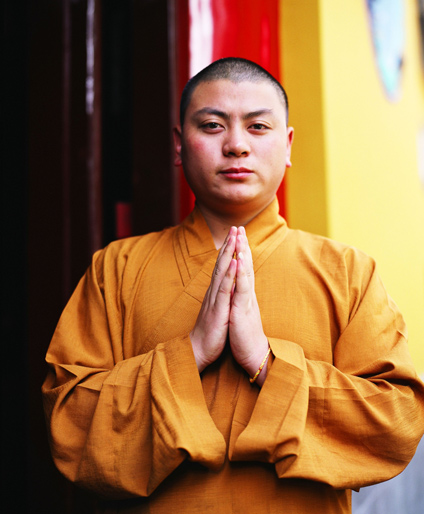The views expressed in our content reflect individual perspectives and do not represent the authoritative views of the Baha'i Faith.
In the quest to find the meaning of life, every spiritual journey starts by looking inward and discovering the self.
That’s how Baha’u’llah’s mystical book The Four Valleys begins. The first sentence reads cryptically and even somewhat mysteriously in English, but in the original Persian it has many levels of literal, poetic, symbolic and spiritual meaning. No limited series of essays like this one could exhaust all those meanings, but let’s look at just a few of them. First, the opening sentence itself:
If the travelers seek after the goal of the Intended One (maqsud), this station appertaineth to the self—but that self which is “The Self of God standing within Him with laws. – Baha’u’llah, The Four Valleys, p. 49.
In this opening sentence, the “travelers” refers to those who attempt to walk a spiritual path in life. The Persian word “maqsud” means the intended or the proposed, and also denotes, in the original Persian, the Kaaba, Islam’s holiest spot. But rather than referring to any actual physical place, Baha’u’llah’s particular usage of the word symbolically stands for the first station on the journey toward the ultimate, toward nirvana, toward God—the intended one.
The final portion of that first sentence, “… the Self of God standing within Him with laws,” is a quote from a traditional Islamic saying attributed to Muhammad, a hadith. Baha’u’llah uses it to refer to two of the main themes of the first valley—the spiritual laws of God and their relation to our inner selves. Psychologists call this first stage of spiritual maturity and growth the conventional phase, when we attempt to live our lives by following the laws of our parents, our Faith and our societies.
I call this first stage on the seeker’s path the valley of self, because in the first of The Four Valleys Baha’u’llah says “this station appertaineth to the self…” “One must then read the book of his own self…” “On this plane,” he continues, “the self is not rejected but beloved; it is well-pleasing and not to be shunned.” (pp. 50-51.)
In this self-focused stage of human spiritual and moral development, which corresponds directly with the first of all the four-stage perennial philosophy models, the discovery of self functions as the starting place for all spiritual attainment. Baha’u’llah encourages every seeker to study first the reality of his own soul, and to look within for the reality of the spirit, which guides all sincere search.
“Know thyself,” read the admonition on the Delphic Oracle in ancient Greece, and that fundamental advice still holds true today.
 The first step in these four basic stages of human spiritual growth that Baha’u’llah outlines have close parallels to Buddhist and Hindu philosophy, among many others. The Hindu Vedantas express this same basic four-stage idea—which they define as gross, subtle, causal, and ultimate. In Hindu mysticism, each level of consciousness represents a reduced reflection of the highest consciousness.
The first step in these four basic stages of human spiritual growth that Baha’u’llah outlines have close parallels to Buddhist and Hindu philosophy, among many others. The Hindu Vedantas express this same basic four-stage idea—which they define as gross, subtle, causal, and ultimate. In Hindu mysticism, each level of consciousness represents a reduced reflection of the highest consciousness.
The philosopher Ken Wilber, in his book Eye to Eye, points out that the Buddhist vijnana psychology “holds that there are four classes of consciousness, each being a stepped- down version of Universal Mind.” (p. 168.)
As the late religious historian Huston Smith pointed out repeatedly, most notably in his book Forgotten Truth, the stages of spiritual search in the world’s great mystical traditions usually comprise between four and seven steps—with four steps serving as the absolute, irreducible minimum number. These four levels of being—which Smith, Schuon and other scholars generally identify as body, mind, soul and spirit—map the path of growth in our human spiritual evolution, both individually and collectively.
The humanist psychologist Rollo May described this four-fold model of consciousness as the underlying psychological basis for the four-fold path:
We have seen that becoming a person means going through several stages of consciousness of one’s self. The first is that of the innocence of the infant before consciousness of self is born. The second is the stage of rebellion, when the person is trying to become free to establish some inner strength in his own right. In greater or lesser degree rebellion is a necessary transition as one cuts old ties and seeks to make new ones. But rebellion is not to be confused with freedom. The third stage we may call the ordinary consciousness of self. In this stage a person can to some extent see his errors, make some allowance for his prejudices, use his guilt feelings and anxiety as experiences to learn from, and make his decisions with some responsibility. This is what most people mean when they speak of a healthy state of personality. But there is a fourth stage of consciousness which is extraordinary in the sense that most individuals experience it only rarely … Such consciousness may occur in scientific, religious or artistic activity alike; it is sometimes popularly called ’dawning’ of ideas or ’inspiration.’ As all students of creative activity make clear, this level of consciousness is present in all creative work. The classic psychological term for this awareness is ecstasy. The word literally means ’to stand outside one’s self,’ that is, to catch a view of, or experience something, from a perspective outside one’s usual limited viewpoint. Temporarily we can transcend the usual limits of conscious personality. This creative self-consciousness is a stage that most of us achieve only at rare intervals; and none of us, except the saints, religious or secular, and the great creative figures, live very much of our lives at this level. But it is the level which gives meaning to our actions and experiences on the lesser levels. It is as though for a moment one stood on a mountain peak, and viewed his life from that wide and unlimited perspective. – Man’s Search for Himself, pp. 138-141.
In this same way, The Four Valleys commences as all spiritual paths do, with an unfettered search after truth and an exploration of the inner self. If you’d like to take the first step on that inner journey, it begins with meditative reflection, and a few simple questions you might want to ask yourself: Why did I do that? What makes me feel that way? What gives me lasting happiness, and why?
When a seeker starts to ask and then search for answers to those kinds of questions, a spiritual path appears.
















Comments
Sign in or create an account
Continue with Googleor